| Compact car; Built in South Korea |
|
|
| Good condition price range: $1,000 – $1,700* |
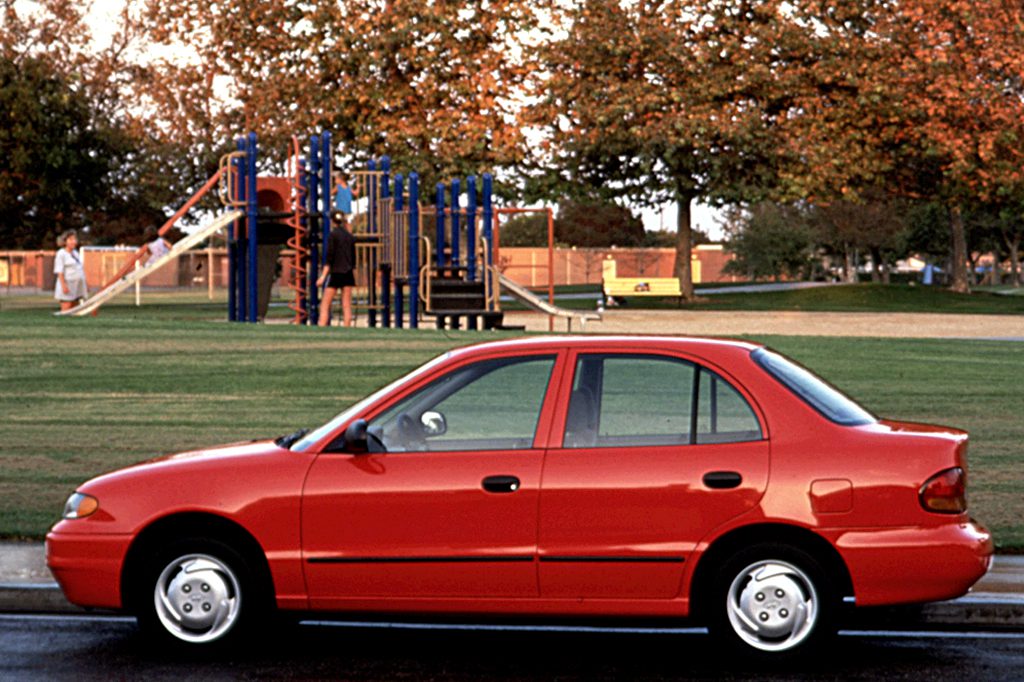
1995 Hyundai Accent 4-door sedan
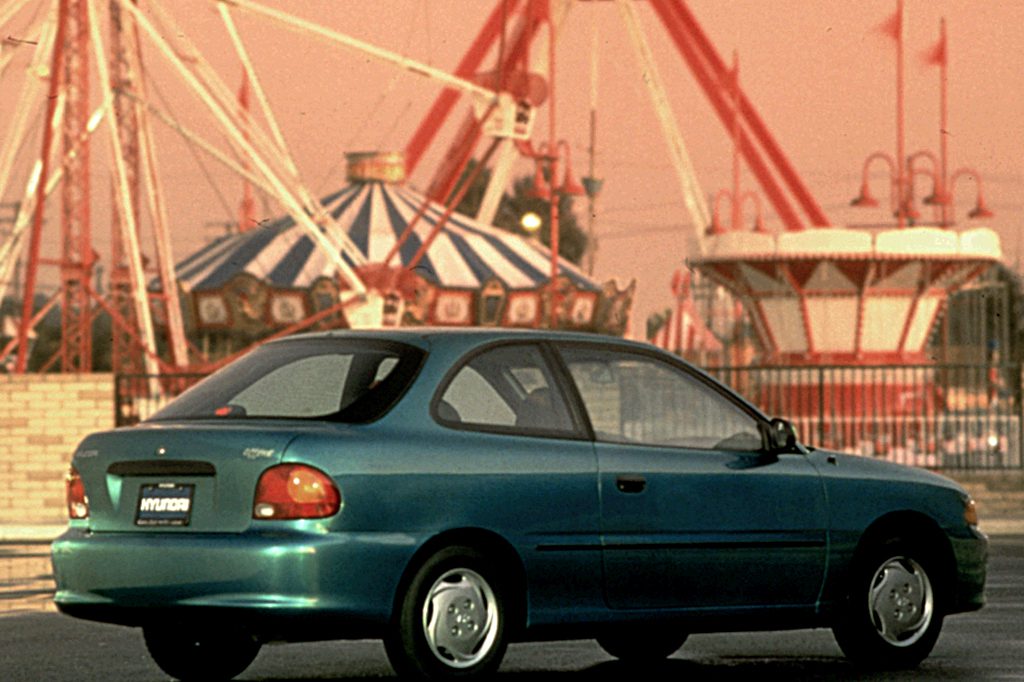
1995 Hyundai Accent 2-door hatchback
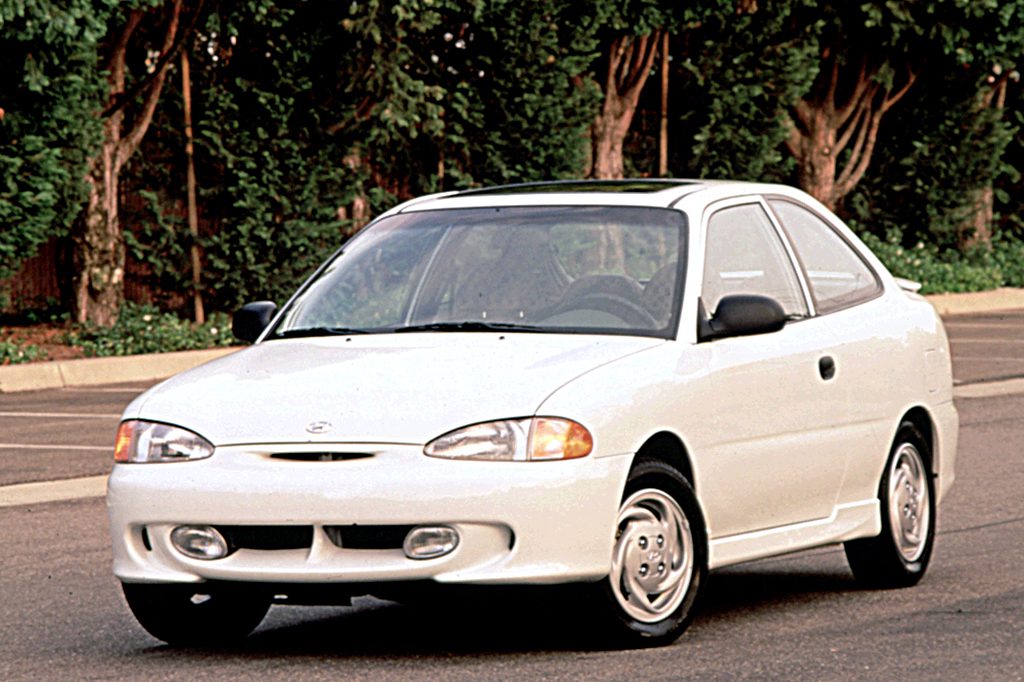
1996 Hyuyndai Accent GT 2-door hatchback
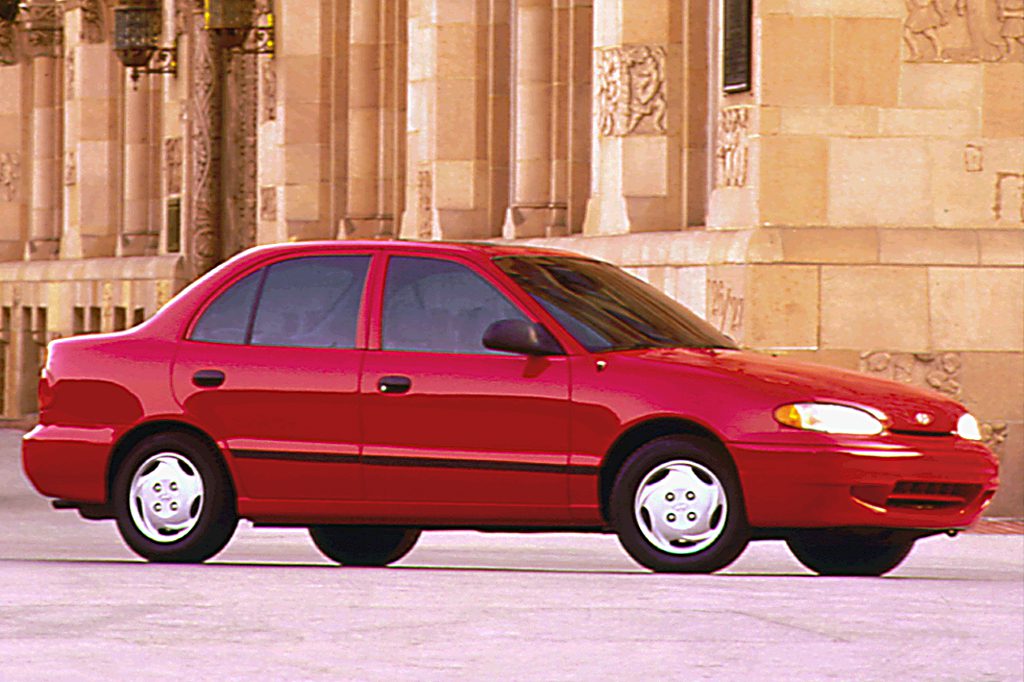
1997 Hyundai Accent 4-door sedan
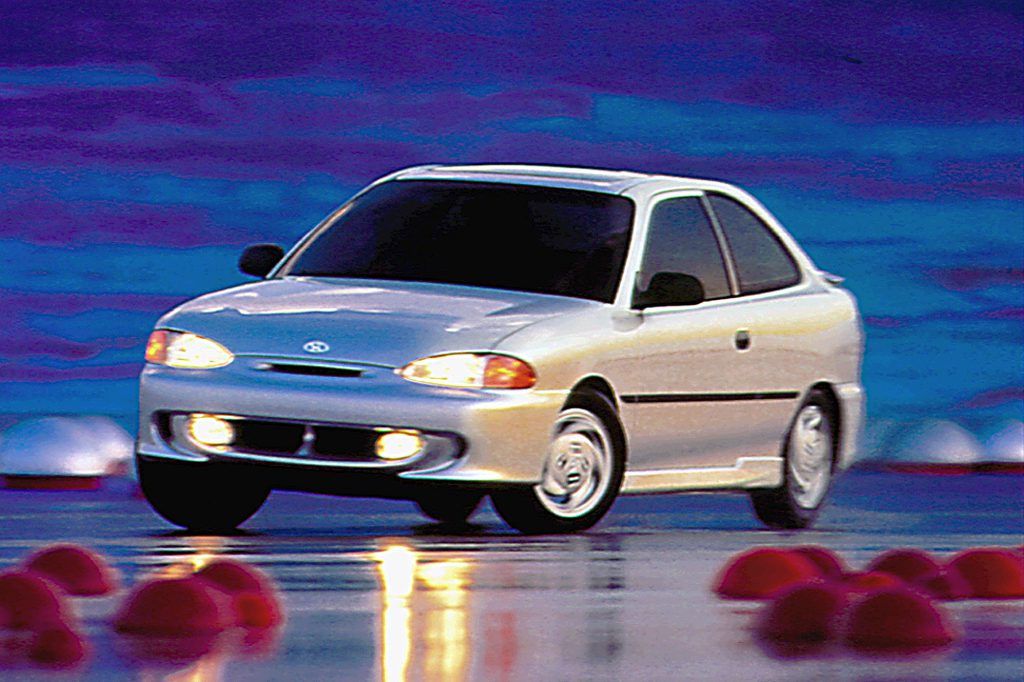
1997 Hyundai Accent GT 2-door coupe
| Pros: |
|
| Cons: |
|
Because an Accent is also more satisfying to drive than some rivals, it can be a reasonable buy, provided that you can get beyond the interior noise problem. Reliability is also a question. All told, we recommend something larger for everyday transportation.
Overview
Accent replaced the Excel as the South Korean company’s entry-level model, to compete against the Ford Aspire, Geo Metro, Toyota Tercel, and other budget subcompacts. Initially, Accent came only as a 4-door notchback sedan, but a 2-door hatchback was added the next summer. Three models went on sale: L hatchback (the lowest-priced Accent), and base versions of both the hatchback and the sedan. Accents used Hyundai’s 1.5-liter 4-cylinder. Rated at 92 horsepower. A 5-speed manual transmission was standard and 4-speed automatic optional on all models except the L hatchback. Dual airbags were standard. Antilock brakes were optional on base models, but not available on the L.
Yearly Updates
| 1996 Accent A sporty new GT with a more-potent, 105-horsepower, dual-overhead-cam engine arrived early in ’96. Unique GT features included a firmer suspension and performance tires on 14-inch alloy wheels, a tachometer, rear spoiler, fog lamps, full cloth interior trim, and a stereo system with four speakers. |
| 1997 Accent Sedans adopted a GL designation this year, while base hatchbacks were called GS. |
| 1998 Accent Hyundai dropped the GT model and its 105-horsepower engine for ’98. Other changes include revised front and rear fascias and new headlights. |
| 1999 Accent Gone were the optional antilock brakes. However, Hyundai did add an impressive new warranty and cut prices, both of which mean little to used car buyers. A redesigned Accent emerged for 2000. |
